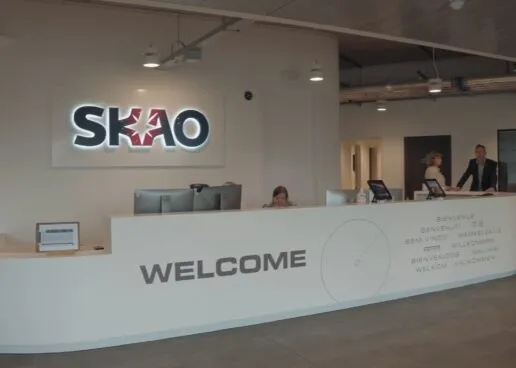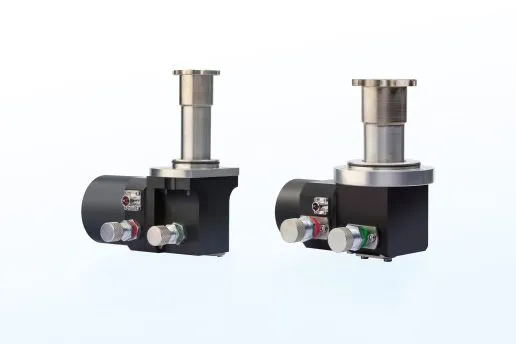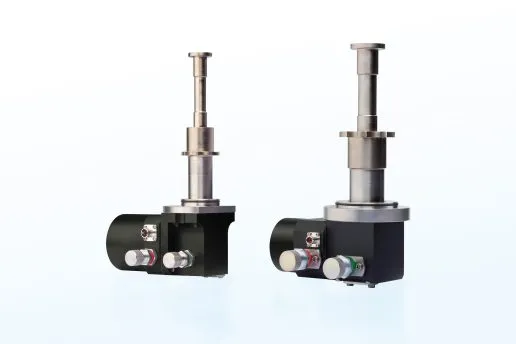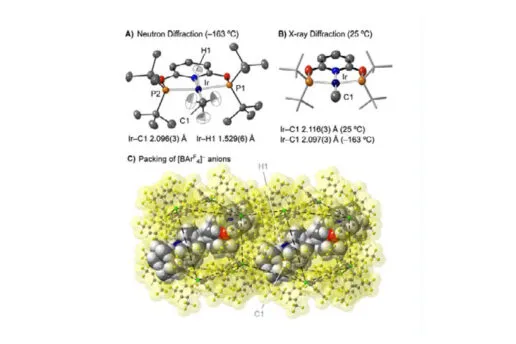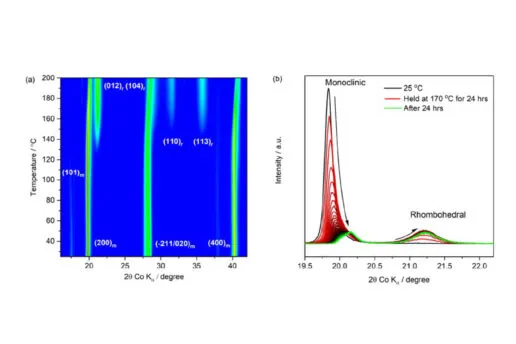This summer, the SKA Observatory headquarters at Jodrell Bank welcomed a special guest – Lord Patrick Vallance, the UK Minister of State for Science, Research and Innovation. As he arrived, SKAO staff gathered alongside the companies developing hardware and software for SKAO’s telescopes. Among them was OxCryo, ready to showcase how our cryogenic solutions are contributing to this groundbreaking multi-national project.
Beating the Heat: Ultra-Cold Solutions in South Africa’s Karoo
The SKA-Mid will soon become one of the world’s largest radio telescope arrays, with a total collecting area of 33,000m2. Each of its 197 dishes will use several different receivers, or feeds, designed to detect different frequencies within the range of 350 MHz and 15.4 GHz. This colossal scientific endeavour aims to peel back the layers of cosmic history, from unravelling how galaxies formed, to using pulsars as precise cosmic clocks to detect elusive gravitational waves.
Positioned in the remote heart of South Africa’s Karoo desert, an unforgiving environment with temperatures rising above 40°C in summer, the array will detect faint radio signals from distant celestial objects. To achieve this goal, the receivers need to remain at extremely low temperatures of around 20 K (-253°C). Achieving and sustaining cryogenic temperatures in this remote location required the development of ruggedised cryogenic systems, capable of reducing the thermal noise while operating under harsh environmental conditions.
We sat down with William Garnier, Director of Communications, Outreach and Education at SKAO, to discuss more about why our cryogenic coolers are such a crucial component for the SKA project.
Engineering Milestones: From C-BASS to SKA-Mid
Our journey into advanced cryogenic engineering for radio astronomy started with a collaboration on the C-Band All-Sky Survey (C-BASS) project. The C-BASS project operated two telescopes: one in the northern hemisphere at the Owens Valley Radio Observatory in California, and another in the southern hemisphere at the Klerefontein base in the Karoo region of South Africa. It aimed to map the sky in intensity and polarization at a frequency of 5 GHz, providing crucial data to refine observations of the Cosmic Microwave Background (CMB) by accurately subtracting Galactic synchrotron emissions.
The collaboration with the University of Oxford Astrophysics Department involved supplying the cryocoolers and helium compressors essential for cooling the sensitive microwave amplifiers used in the C-BASS receivers. The project proved the capabilities of our cryocoolers and laid the groundwork for a subsequent contribution to much larger-scale project: MeerKAT.

“We were excited to discover a local company who had exactly the products we needed and who were happy to support these for what, for Oxford Cryosystems, was a new application.”
— Mike Jones, Professor of Experimental Cosmology at the University of Oxford
Meeting MeerKAT: Collaborating with EMSS Antennas
In 2014 we were introduced to EMSS Antennas, a South African company designing receivers for SARAO’s MeerKAT, the precursor to SKA-Mid. EMSS required ruggedised cryocoolers that could withstand the extreme conditions of the Karoo desert and knew us from our work on C-BASS.
Collaborating with them, we developed ruggedised versions of our cryocooler technology to support MeerKAT’s 64-dish array. The project was a significant milestone, establishing our reputation as a reliable supplier capable of delivering high-performance cryogenic systems for large-scale radio astronomy.
Joint Innovation: Developing the AC3 with STFC
Building on our success with MeerKAT, in 2015 the University of Oxford awarded us a contract to design and develop a ruggedised air-cooled helium compressor tailored for the SKA-Mid. The project would result in the AC3 and was jointly funded by ourselves and the UK’s Science and Technology Facilities Council (STFC).
Developing the AC3 helium compressor built on our earlier success in ruggedising cryocoolers for MeerKAT. Combined, these two technologies – our robust cryocoolers and the new AC3 – created a cryogenic cooling solution specifically engineered for radio astronomy in demanding environments. With these capabilities in place, we are ready to support SKAO on SKA-Mid and from 2023 we have been providing cryocoolers for each of the Band 2 receivers as well as the helium compressor in the first deployment of dishes.
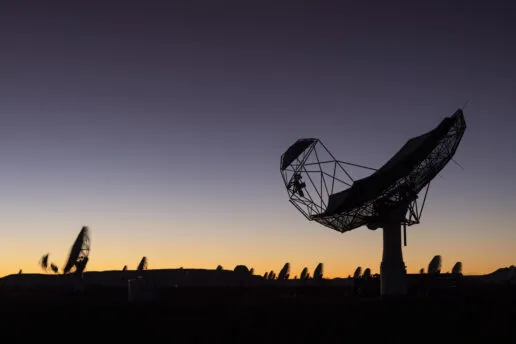
“The cryocoolers maximise the telescope’s observing time when cooling the detectors to -260°C. The products are well established and are an excellent example of industry-academia collaboration. The SKAO looks forward to continuing to work with them in the future.”
— Mark Harman, SKAO Dish Project Manager.

Beyond the Karoo: Supplying Tomorrow’s Telescopes
Over the past 15 years, these projects have firmly established us as a trusted name in cryogenic cooling for radio astronomy. Our involvement in such groundbreaking initiatives has not only showcased our ability to engineer innovative in these ruggedised systems that thrive in some of the planet’s harshest environments, but has also proven our strength in collaborating effectively with a diverse range of partners and clients.
From academic institutions like the University of Oxford to industry leaders such as EMSS Antennas and global organisations like SKAO, each partnership has enabled us to deliver tailored solutions that meet unique technical and operational demands. It is a testament to the dedication, adaptability, and ingenuity of our team, and we take immense pride in what we have achieved together. As we look to the future, we are excited to continue building these strong collaborative relationships, supporting scientists worldwide in their quest to unlock the universe’s deepest secrets.
References
SKA-Mid
- STFC (Sara Fletcher & Carol Watts): Helping SKA-Mid Keep It’s CoolSKAO: South African technology front and centre for SKA-Mid telescope
-
SKA-Mid Telescope overview – SKAO science goals and technical specifications
https://www.skao.int/en/explore/telescopes/ska-mid
MeerKAT
-
EMSS Antennas – MeerKAT receiver development project overview
https://www.emssantennas.com/projects/meerkat/ -
SARAO – MeerKAT science overview
https://www.sarao.ac.za/science/meerkat/
C-BASS Telescope
-
C-BASS official project website (University of Oxford)
https://cbass.web.ox.ac.uk -
SARAO – C-BASS southern telescope gallery and technical summary
https://www.sarao.ac.za/gallery/c-bass/ -
Hartebeesthoek Radio Astronomy Observatory (HartRAO) – C-BASS project page
https://www.hartrao.ac.za/c-bass/ -
C-BASS Southern telescope move to Klerefontein (2009) – Hartebeesthoek project timeline
https://www.hartrao.ac.za/c-bass/
Funding and Partnerships
-
Science and Technology Facilities Council (STFC), or UKRI STFC
https://stfc.ukri.org -
University of Oxford Astrophysics Department
https://www.physics.ox.ac.uk/research/group/astrophysics -
South African Radio Astronomy Observatory (SARAO)
https://www.sarao.ac.za -
SKA Observatory (SKAO)
https://www.skao.int -
EMSS Antennas
https://www.emssantennas.com
